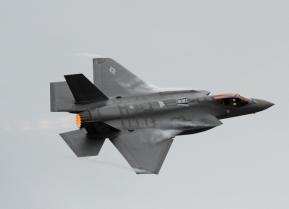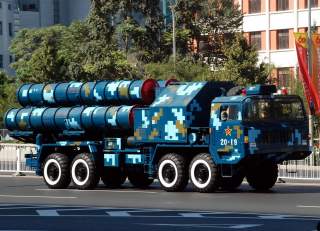China's HQ-9 vs. Russia's S-300 Air Defense System: What's the Difference?
Is the HQ-9 just a parallel evolution that reached a similar end state?
The HQ-9 is China’s primary long-range domestic surface-to-air missile. Outwardly, it seems similar to the S-300, using large flat face radars and a large missile that vertically launches out of a canister. But since the Sino-Soviet split in the 1950s, China didn’t receive that much assistance in surface-to-air missile development from the Soviet Union. Is the HQ-9 just a parallel evolution that reached a similar end state?
At the time of the Sino-Soviet split, China’s only true long range SAM was the S-75 (SA-2). Work proceeded on various medium and short range SAMs such as the HQ-61 and HQ-6. However, as China began modernizing its military fully in the 1990s there was a lack of a true mobile long-range SAM such as the Patriot or S-300, both of which entered service in the United States and Russia in the 1980s.
The Chinese research and development complex took two approaches to this. Domestic prototypes of the HQ-9 began development in the 1980s, and continued slowly through the 1990s. During the 1990s, China probably saw the opportunity to buy the then-advanced S-300PMU-1 from the Russian Federation and took the offer, acquiring some sets in 1993.
According to Russian sources, these missiles underwent significant reverse engineering and solutions from them were applied to the domestic HQ-9 missile. Chinese sources credit Chinese engineers with developing the HQ-9 on their own. While this may have been true for the earlier period, the procurement of the S-300 prior to the first IOC of the HQ-9 suggests otherwise. Western sources tend to support the Russian point of view, stating that “The HQ-9 family of missiles are clearly derived from the Russian S-300PMU.”
The HQ-9 reached initial operational capability some time later (Chinese sources state 1995), and has been continually modernized since. The acquisition of S-300PMU-2 missiles in 2004 provided further resources for China to develop the HQ-9. The current acquisition of S-400s in 2018 probably will contribute further towards the development of the HQ-9.
As a result of these developments, a myriad of variants of the HQ-9 have been developed. The HQ-9A was the first major deployed upgrade, which added additional anti-ballistic capability though improved electronics. The HQ-9B is said to improve range, possibly out to around 250 or even 300 kilometers.
Operationally, the HQ-9 is said to have been deployed to islands on the South China Sea. What’s more worrying though is China’s willingness to export the HQ-9, which is a fairly capable missile. The price is estimated to be cheaper than what export S-300s are going for, and China’s relationship with Pakistan may result in the interesting situation with India fielding S-400s and Pakistan fielding HQ-9s.
Overall, the trend of the HQ-9’s development appears to follow the same general trend of the Chinese variants of the Flankers. China saw an opportunity to procure some of the best Soviet designed systems in the 1990s, then proceeded to domestically produce them, incrementally procuring more advanced versions from Russia to keep up to date with them. China has also attempted to integrate more advanced technology like active radar seekers or home-on-emission into the HQ-9, however the status of these advanced developments is uncertain.
What’s surprising is that Russia continues exporting the near latest missiles such as S-400 to China, when it’s likely that China will pump out an updated version of the HQ-9 for export with the same features within a few years, potentially cutting into Russia’s market share. Unlike with China’s Flankers, Chinese industry doesn’t really have a “bottleneck” or a specific part that is known to be inferior relative to the Russian product. However, Russia’s seeming lack of worry may suggest that the HQ-9 is less capable enough relative to original S-400s or S-300PMUs to not really have much competition.
Charlie Gao studied political and computer science at Grinnell College and is a frequent commentator on defense and national-security issues.
Image: Wikimedia.


